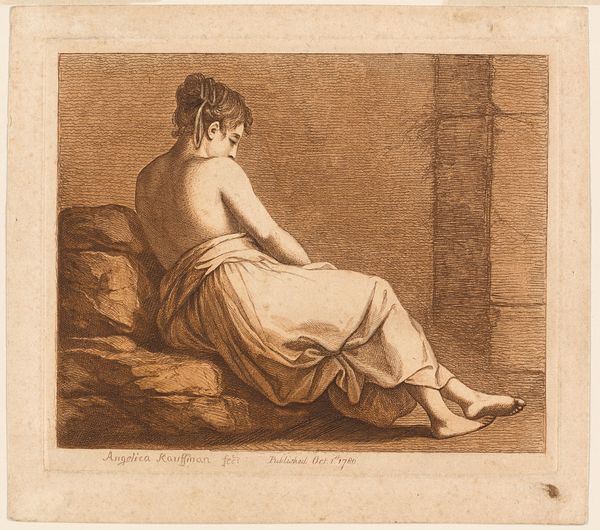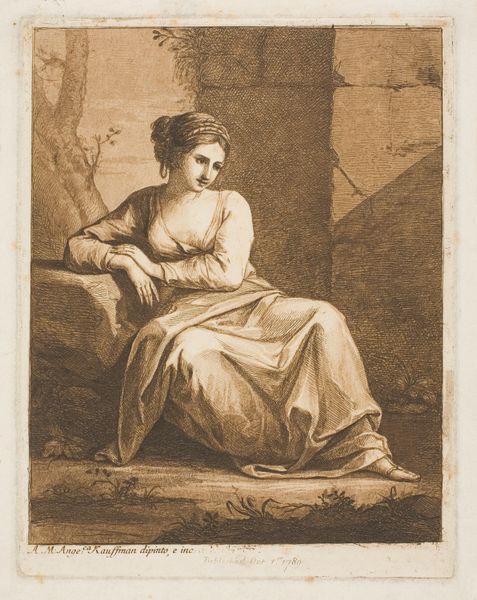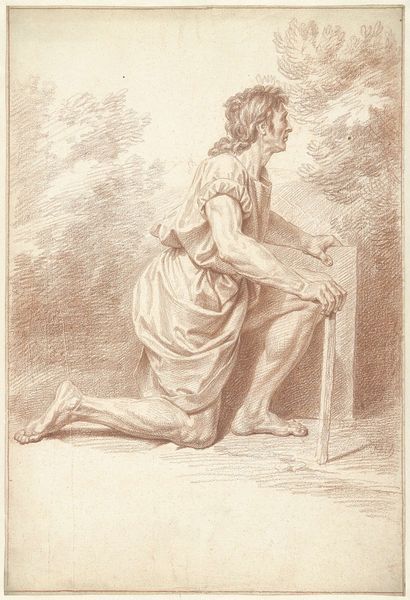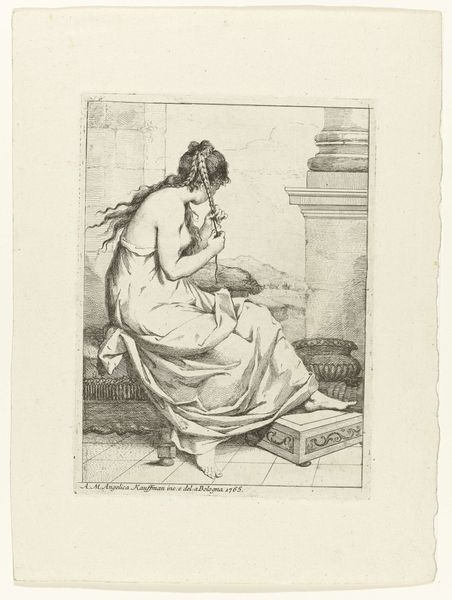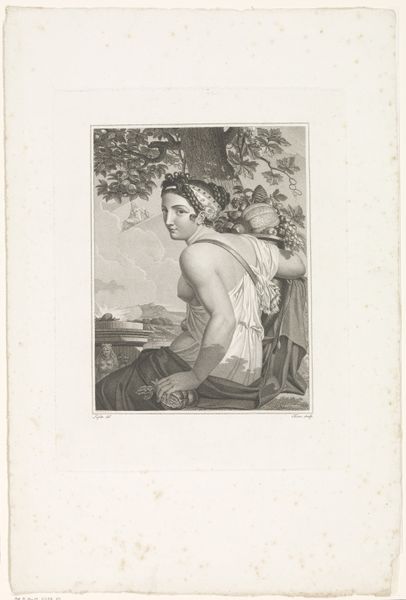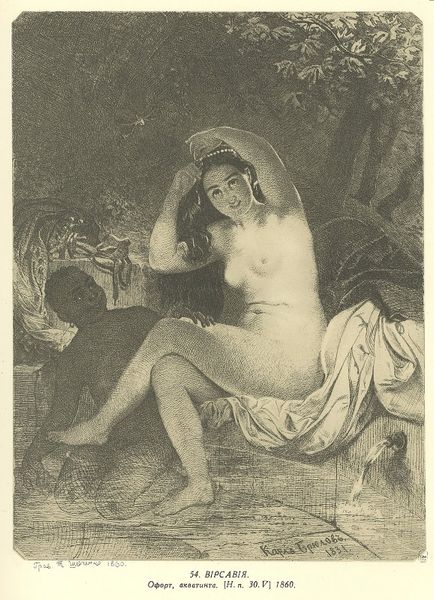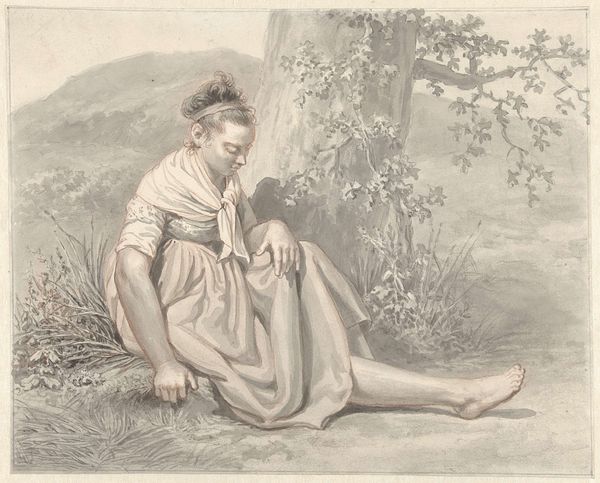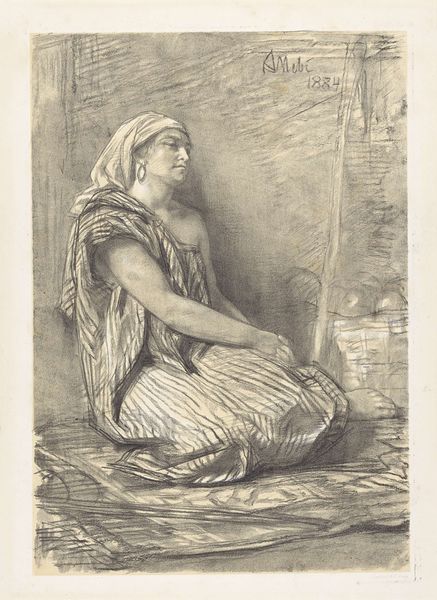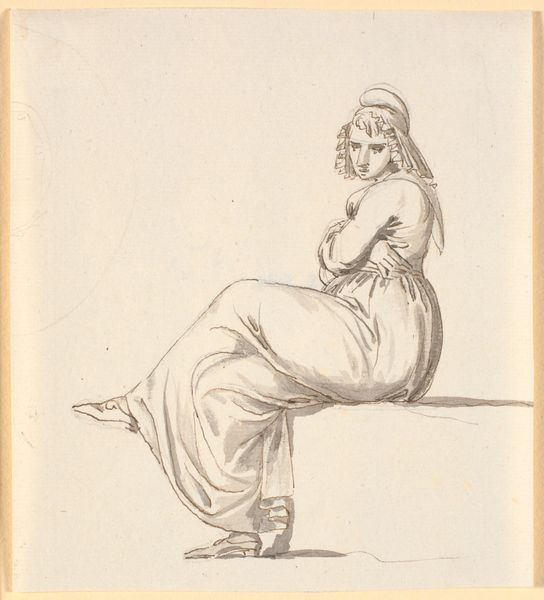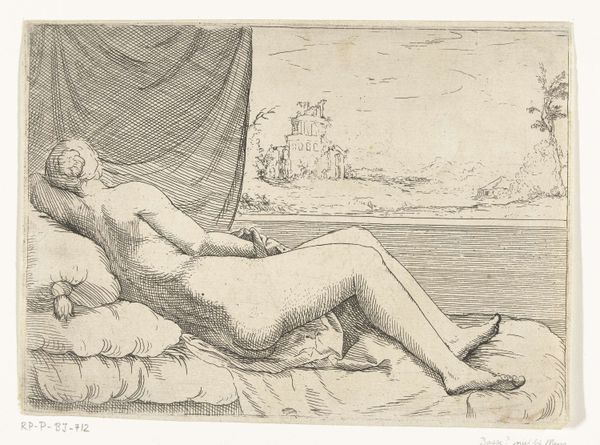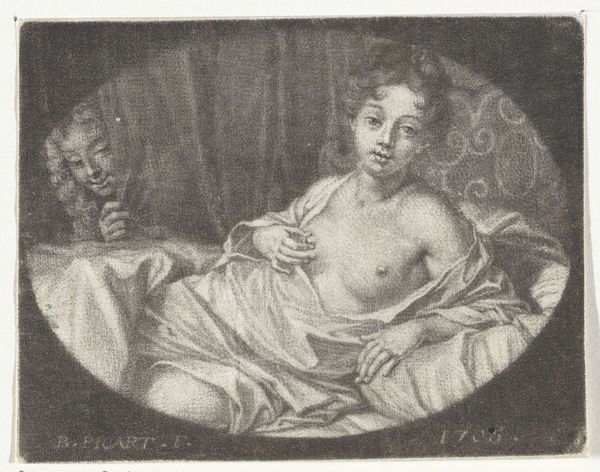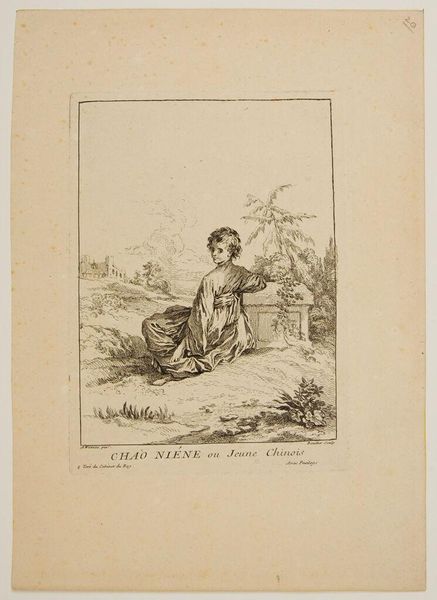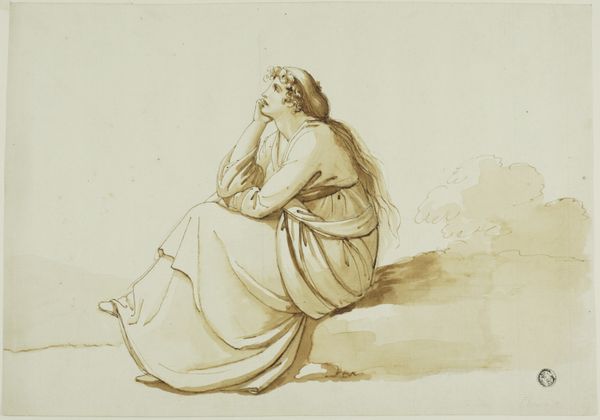
drawing, engraving
#
portrait
#
drawing
#
neoclacissism
#
old engraving style
#
figuration
#
pencil drawing
#
romanticism
#
line
#
portrait drawing
#
history-painting
#
engraving
#
realism
Copyright: Public Domain: Artvee
Editor: Here we have "Seated Woman, Le Blanc 20", an engraving attributed to Angelica Kauffmann. It feels classically inspired, but rendered with a softness that's quite appealing. What strikes me most is the stark contrast between the rough, textured wall and the smooth drapery. What do you see in this piece? Curator: This work really speaks to the social status of engraving during the period. Here we have a process of mass production, turning out a domestic-sized imitation of fine-art paintings, but not in itself of high value. The material—cheap paper, essentially—belies the aspirations of its neoclassical aesthetic. What kind of labor went into this image’s production and what were the conditions of making and reception? These are all very pertinent questions in understanding Kauffmann's aims. Editor: That's fascinating. I hadn't considered the engraving process itself as part of the artwork's meaning. So, the very *act* of reproducing classical ideals using this particular method—engraving—says something about how art was being democratized and consumed at the time? Curator: Precisely! The image could be widely distributed and cheaply bought. Therefore it represents a break with earlier aristocratic models. It also forces us to rethink artistic hierarchy: drawing (conventionally preparatory) made equivalent to finished history paintings. How does the shift in materiality also invite shifts in what counts as *high* art? Editor: So, by focusing on the medium and the means of production, we uncover a whole new layer of meaning! Thanks for shedding light on that. Curator: Indeed, analyzing art through a materialist lens allows us to critically assess the role of art in the broader societal structure. Always examine the means by which the art arrives to you!
Comments
No comments
Be the first to comment and join the conversation on the ultimate creative platform.
